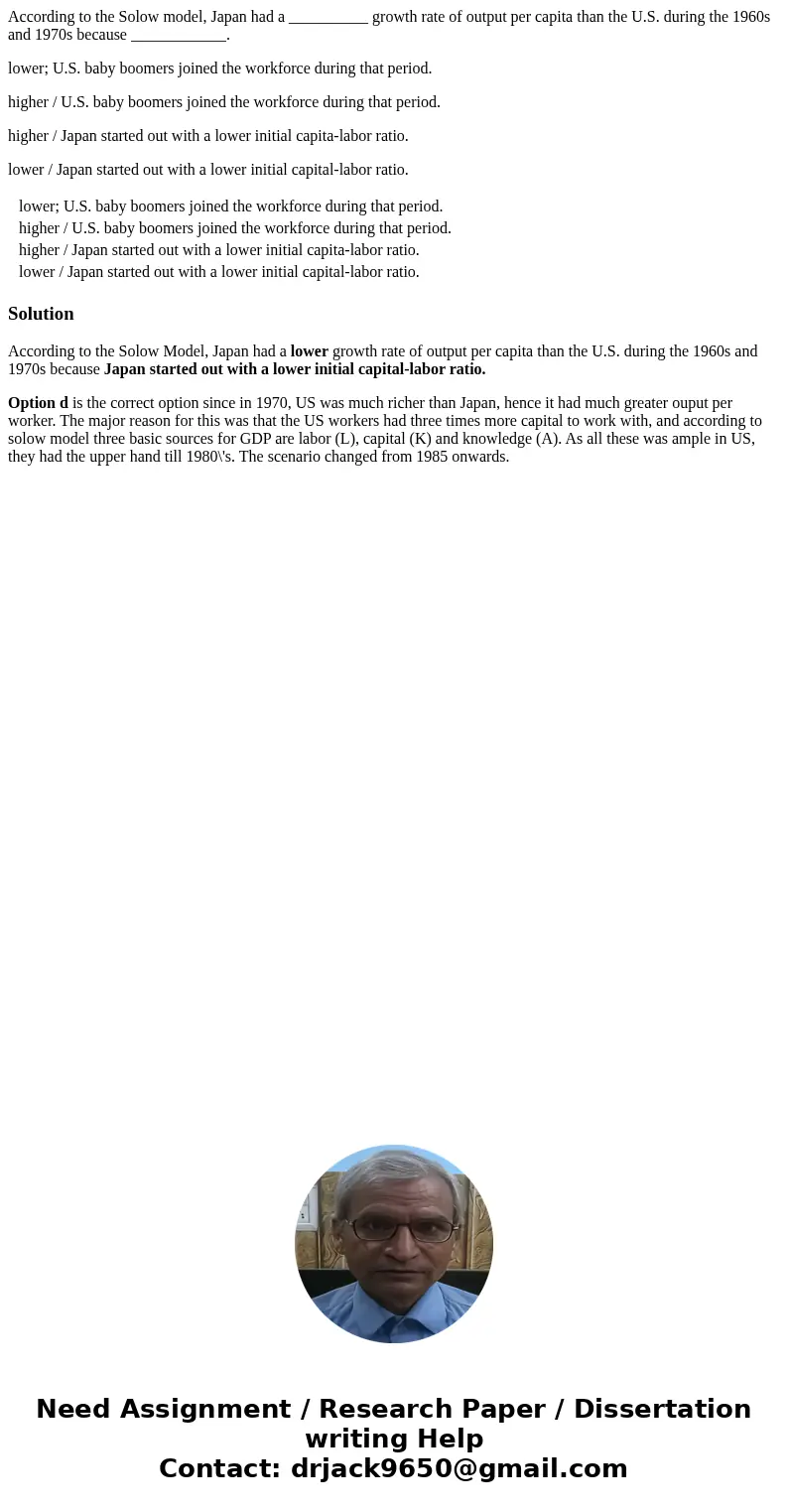According to the Solow model Japan had a growth rate of out
According to the Solow model, Japan had a __________ growth rate of output per capita than the U.S. during the 1960s and 1970s because ____________.
lower; U.S. baby boomers joined the workforce during that period.
higher / U.S. baby boomers joined the workforce during that period.
higher / Japan started out with a lower initial capita-labor ratio.
lower / Japan started out with a lower initial capital-labor ratio.
| lower; U.S. baby boomers joined the workforce during that period. | ||
| higher / U.S. baby boomers joined the workforce during that period. | ||
| higher / Japan started out with a lower initial capita-labor ratio. | ||
| lower / Japan started out with a lower initial capital-labor ratio. |
Solution
According to the Solow Model, Japan had a lower growth rate of output per capita than the U.S. during the 1960s and 1970s because Japan started out with a lower initial capital-labor ratio.
Option d is the correct option since in 1970, US was much richer than Japan, hence it had much greater ouput per worker. The major reason for this was that the US workers had three times more capital to work with, and according to solow model three basic sources for GDP are labor (L), capital (K) and knowledge (A). As all these was ample in US, they had the upper hand till 1980\'s. The scenario changed from 1985 onwards.

 Homework Sourse
Homework Sourse